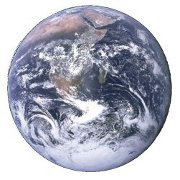
Custom Search
Animals in Mauritius
Mauritius has a tropical climate that remains temperate throughout the year. The winters are relatively sunny and warm and the overall climate is ideal for a number of animals. Some of the indigenous animals faced the risk of extinction and the Mauritian Wildlife Foundation and Durrell Wildlife Conservation Trust are spearheading measures to conserve them.
By 1974, the kestrel was the rarest bird in the world, with just four of them known to exist. This is a type of falcon that largely feeds on large insects, lizards and small mammals. It usually hunts by hovering in the air between ten and twenty meters above the ground before swooping down on its prey.
kestrel was the rarest bird in the world, with just four of them known to exist. This is a type of falcon that largely feeds on large insects, lizards and small mammals. It usually hunts by hovering in the air between ten and twenty meters above the ground before swooping down on its prey.
The pink pigeon, as its name indicates, has pale pink feathers on its underside, shoulders and head. It also has a pink beak and pink feet.
The Dodo, which became extinct as a result of human desire for food, was also native to this small island nation. The flightless bird stood to a height of about one meter.
The giant fruit bats are the earliest mammals found in Mauritius. Having wingspans of almost one meter, these bats change from golden orange on their heads to pitch black at the feet. They are found in large colonies on the mountainside and gorges during the day. The giant fruit bats are the only mammals that can be said to be truly native to Mauritius.
The Dutch are said to have introduced the Javanese deer in Mauritius in 1598. These animals are bred particularly for sports hunting and their meat. The hunting season is usually between June and September.
However, the island seemed to compensate for the lack of mammals by having many species of birds, geckos, skinks and giant tortoises. Among them are the world's rarest parrot-the echo parakeet-the warbler and fody.
By 1974, the

The pink pigeon, as its name indicates, has pale pink feathers on its underside, shoulders and head. It also has a pink beak and pink feet.
The Dodo, which became extinct as a result of human desire for food, was also native to this small island nation. The flightless bird stood to a height of about one meter.
The giant fruit bats are the earliest mammals found in Mauritius. Having wingspans of almost one meter, these bats change from golden orange on their heads to pitch black at the feet. They are found in large colonies on the mountainside and gorges during the day. The giant fruit bats are the only mammals that can be said to be truly native to Mauritius.
The Dutch are said to have introduced the Javanese deer in Mauritius in 1598. These animals are bred particularly for sports hunting and their meat. The hunting season is usually between June and September.
However, the island seemed to compensate for the lack of mammals by having many species of birds, geckos, skinks and giant tortoises. Among them are the world's rarest parrot-the echo parakeet-the warbler and fody.
Click here for a list of endangered animals in Mauritius.
Dolphins, porpoises, and whales in Mauritius
Blainville's beaked whale Gray's beaked whaleBats in Mauritius
Rodrigues flying fox Dark flying fox Mauritian tomb bat Natal free-tailed bat Greater mascarene flying foxDugongs, manatees, and sea cows in Mauritius
Dugong Information about the animals living in Mauritius is brought to you by "List of countries of the world", your first stop in discovering all countries and animals of the world.
Information about the animals living in Mauritius is brought to you by "List of countries of the world", your first stop in discovering all countries and animals of the world.The animals displayed on this page are grouped in their scientific order. View also countries of the world ordered by:
- List of TLD's
- Country dialling codes
- Population
- Kilometers of coastline
- Square kilometers of land
- Square kilometers of water
- Birth rate
- Death rate
- Irrigated land
- Countries starting with A
Privacy policy